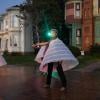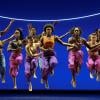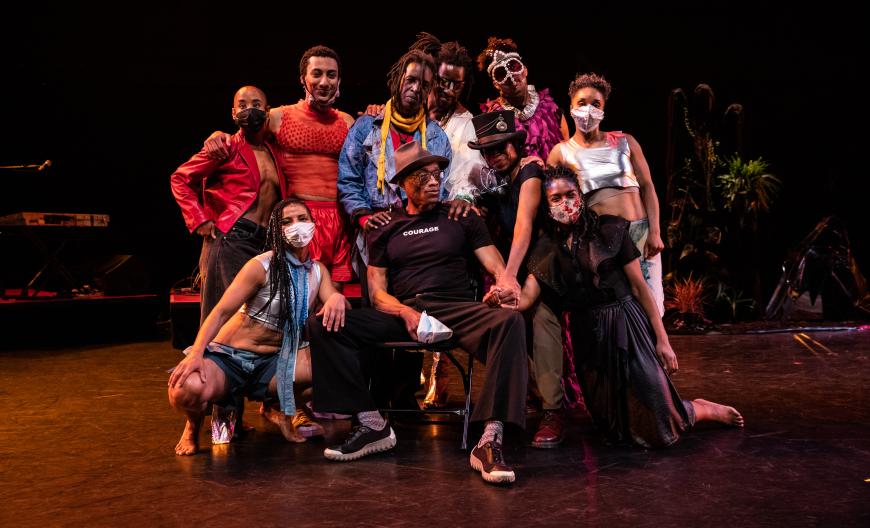
Talk about a mega-collaboration. The Motherboard Suite has it all going on, with seven choreographers exploring themes of exploitation, mystical anarchy, and the intersection of technology and race. Hackers are artists and activists come to life through the words and music of actor and slam-poet-turned-musician Saul Williams in this one-night performance that lands at The Ford on Aug. 9 as part of the LA Phil Insight initiative.
The production is helmed by choreographer Bill T. Jones, co-founder of the Bill T. Jones/Arnie Zane Company and artistic director of New York Live Arts, an experimental performing arts center in the Chelsea district of Manhattan. Created during the COVID-19 pandemic, Motherboard was first mounted outdoors in New York in 2021 before being performed at Seattle’s Meany Center two years later in its West Coast premiere.
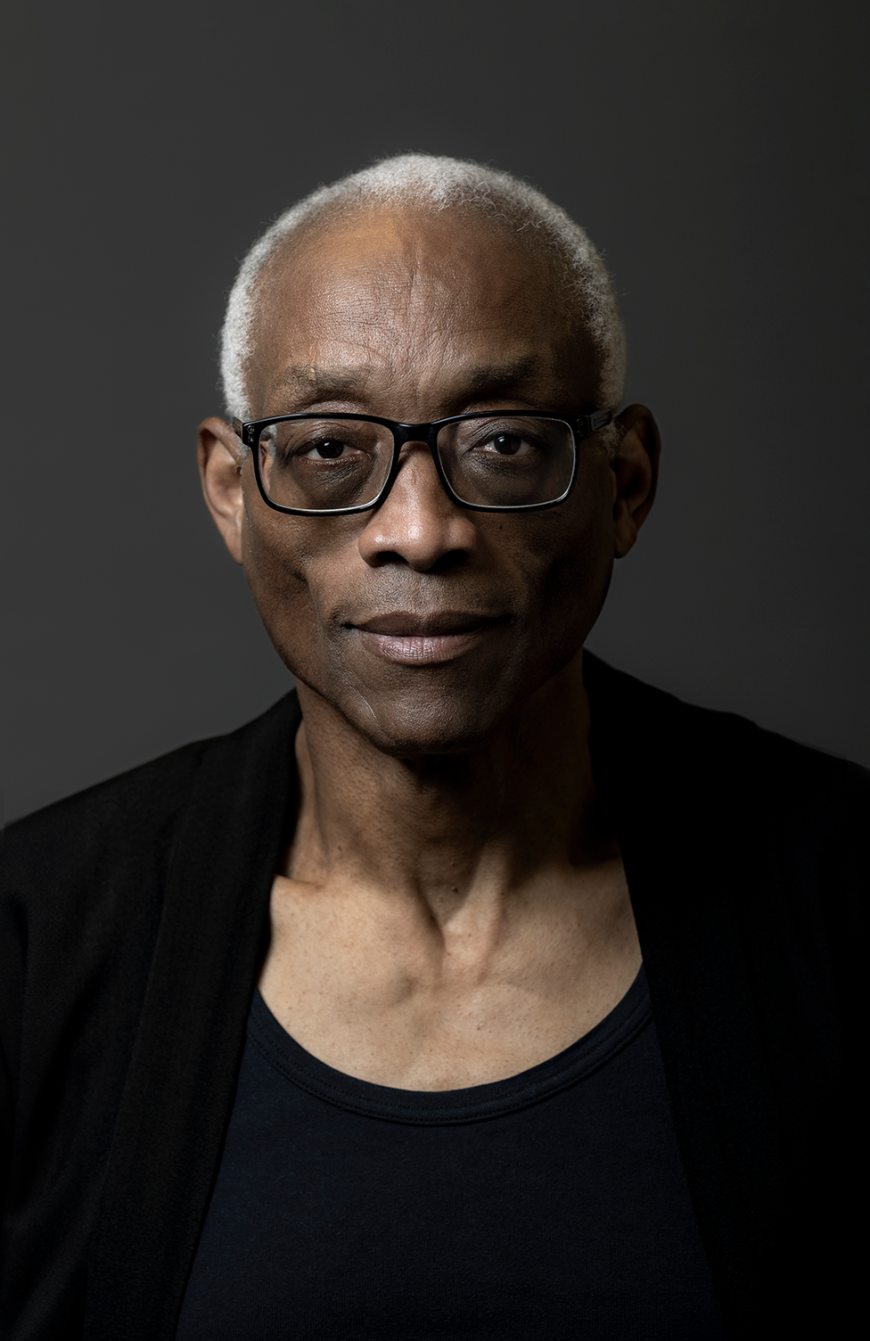
Jones explained the work’s genesis: “We were planning our annual humanities festival [for Live Arts], the Live Ideas festival, which was going to be [centered] around Afrofuturism, and [we wanted to] book Saul to be part of the festival. But [by] the same token, we were very interested in choreographers at different stages of their careers. Live Arts wants to represent a community of choreographers, and [Associate Artistic Director] Janet Wong was able to identify these persons who she thought would be a good mix.”
Because of the pandemic, the dance makers — Maria Bauman, Kayla Farrish, Marjani Forté-Saunders, d. Sabela grimes, Jasmine Hearn, Shamel Pitts, and Jade Solomon Curtis — worked in isolation to create choreography to tracks from Williams’s albums MartyrLoserKing and Encrypted & Vulnerable.
“Janet asked me if I had considered directing it,” recalled Jones. “I didn’t know all of the choreographers, [and] I was more of a traffic cop initially. I [had been] working with the visual artist, Jasmine Hearn, [who] made the decor and was working in an Afrofuturist way. But since we weren’t able to be in the same room, people listened to all of [Williams’s] various tracks [and] chose the ones they responded to the most. That’s how the form was made, and that’s how it started.”
Jones said that he wasn’t thinking about Afrofuturism per se for Motherboard but that he is a “big fan of science fiction. I love Octavia Butler and was amazed that the very term [Afrofuturism] was coined by a white man [cultural critic Mark Dery]. It makes a lot of sense,” added Jones, “because [Dery] was folding this experimentation coming out of 1960s Afrocentrism with Afro-colonialism. [Composer and poet] Sun Ra was the father of it all, [and Dery] was looking for some way to describe that impulse.”
Jones pointed out that he was “curious to see how a movement defines itself, not by the people who make it [but by] how the critical establishment talks about it. Saul brings that particular angle into [the piece]. He was telling us about walking on the beaches of Africa and seeing mounds of motherboards [the main printed circuit boards that are in computers]. I’ve gotten quite an education,” Jones added with a laugh.
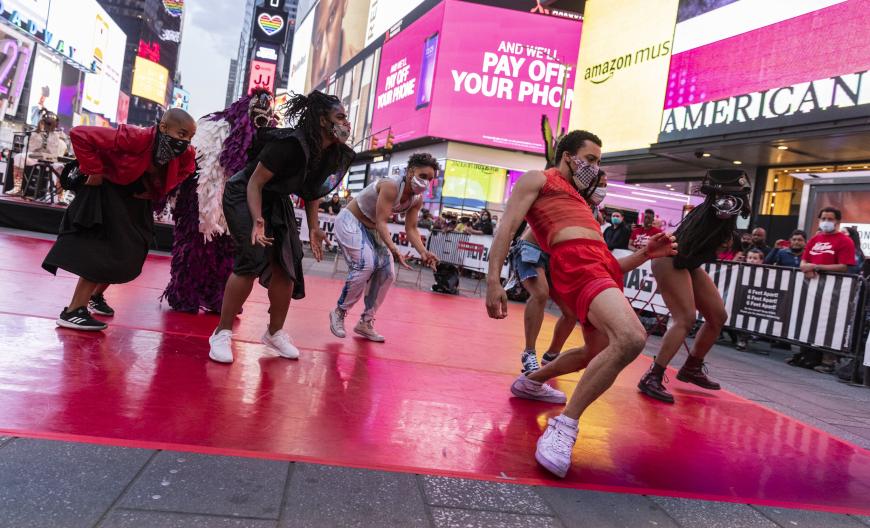
As for the range of choreographers, Jones explained he was so taken with Hearn’s performance in a Will Rawls dance work that he initially asked Hearn to join his company. Ditto for Kayla Farrish, though both Hearn and Farrish continue to work independently. Jones said that Bauman had been a guest teacher for him and that he was introduced to Forté-Saunders by a former Live Arts curator. He met grimes when they both were in residence at the University of Southern California. “I liked his commitment, the pedagogy of hip-hop, and that he’s a choreographer in his own right,” Jones said.
“This whole process has been useful,” the director continued. “I listened to Saul’s music, and his poetry is quite opaque. It gives a lot, but it’s difficult to grasp in the moment. I know I’m an old, fussy fogey, but I love the energy — [how] his words flow by. ‘Hack into doctrine. … Hack into desperation and loneliness.’ It goes on like this. In L.A., we’re going to try and use supertitles [because] there are many words and they tumble past. It [would] give an audience more to hold on to than these surreal images, which is Saul’s game.
“He has the insouciance of a rock musician,” added Jones. “[Rock musicians] don’t really care that you get the words. As a theater person, I do care. [There’s] the authenticity of the gesture. How do we satisfy all the audiences, including dance aficionados, in these different zones of Saul’s creativity?”
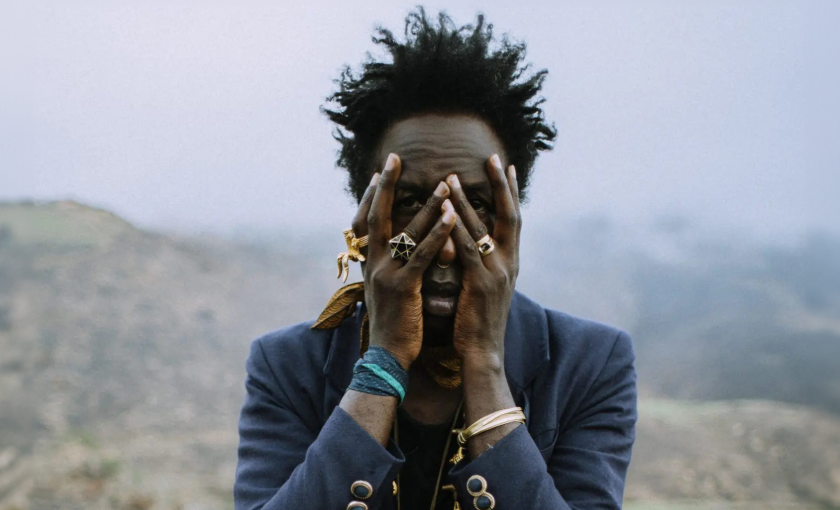
Jones, 72, knows all about zones of creativity. The recipient of fistfuls of honors, including several Bessie Awards, several Tony Awards, a 2010 Kennedy Center Honor, and a 2014 National Medal of Arts, he has also, with the troupe that he co-founded in 1982, been thrilling audiences for years. Indeed, the much-lauded Bill T. Jones/Arnie Zane Company has performed in hundreds of cities in 40 countries on every major continent and is recognized as one of the most innovative and formidable forces in the dance-theater world.
In October, Jones will celebrate the 30th anniversary of his once-controversial work Still/Here with performances at the Brooklyn Academy of Music’s Howard Gilman Opera House. Created during the contentious AIDS era, Still/Here smashed the boundaries between the personal and the political and illustrated a form of dance theater that can only be described as American.
“I’m over the moon about it and scared to death,” Jones confessed about the upcoming performances. “My mother used to say [about recognition], ‘It may not come when you want it, but it’s right on time.’ I’m getting toward the end of my career and having legacy conversations, [so] when BAM said, ‘We’d like to open the series with Still/Here,’ here was the universe talking to me. Here [I’ll] quote myself: ‘Art is participation in the world of ideas, and art happens when something is being pushed against.’
“And that’s where I’m at with my company and the world of ideas. There’s something about Still/Here — how does it travel through time, through different bodies? How has the world been changed by what I did? That’s what I’m interested in.”



